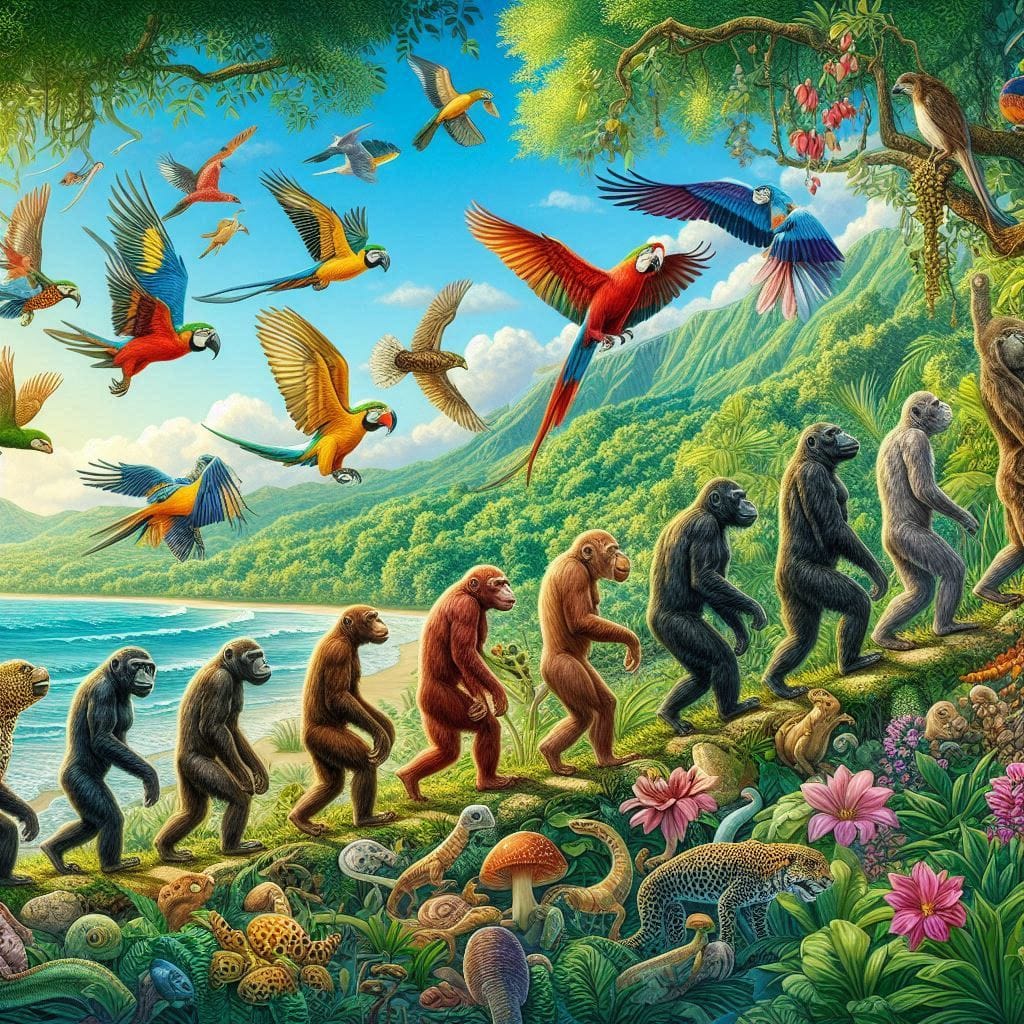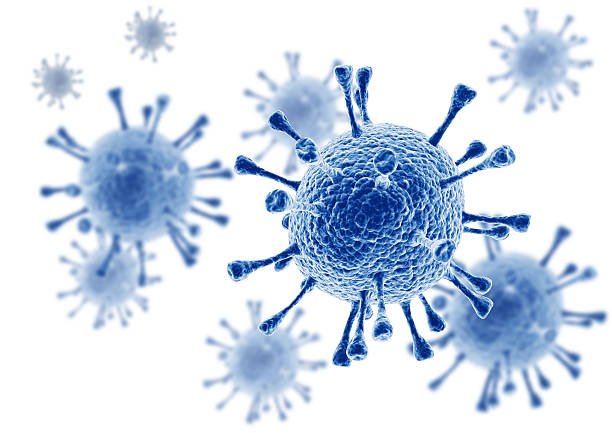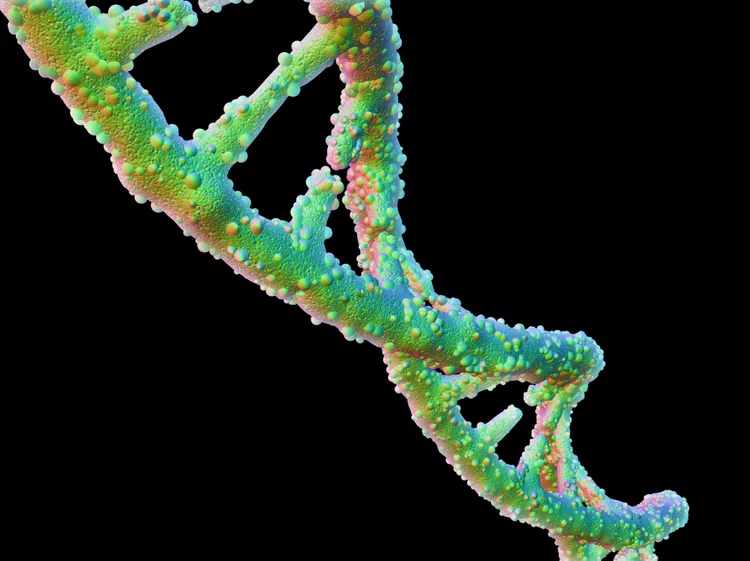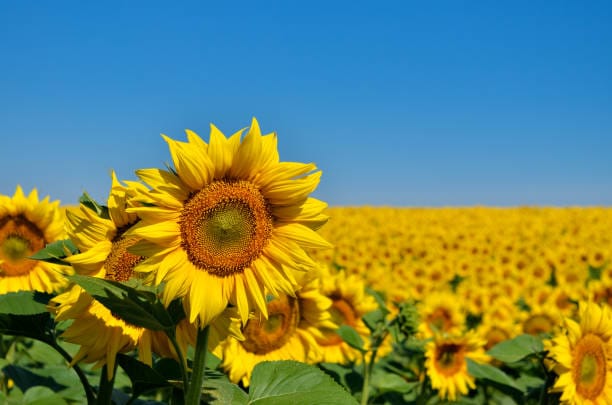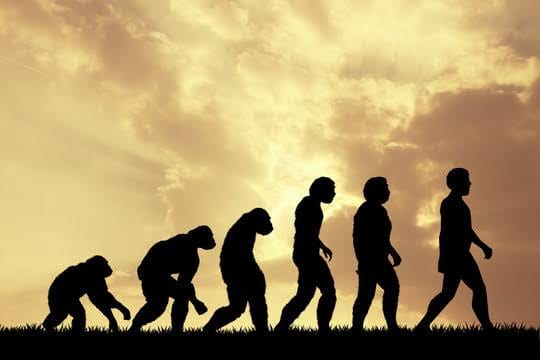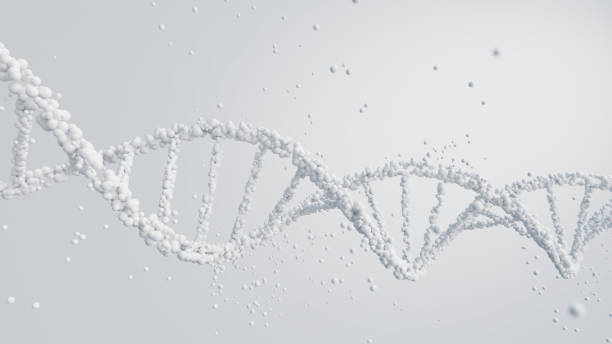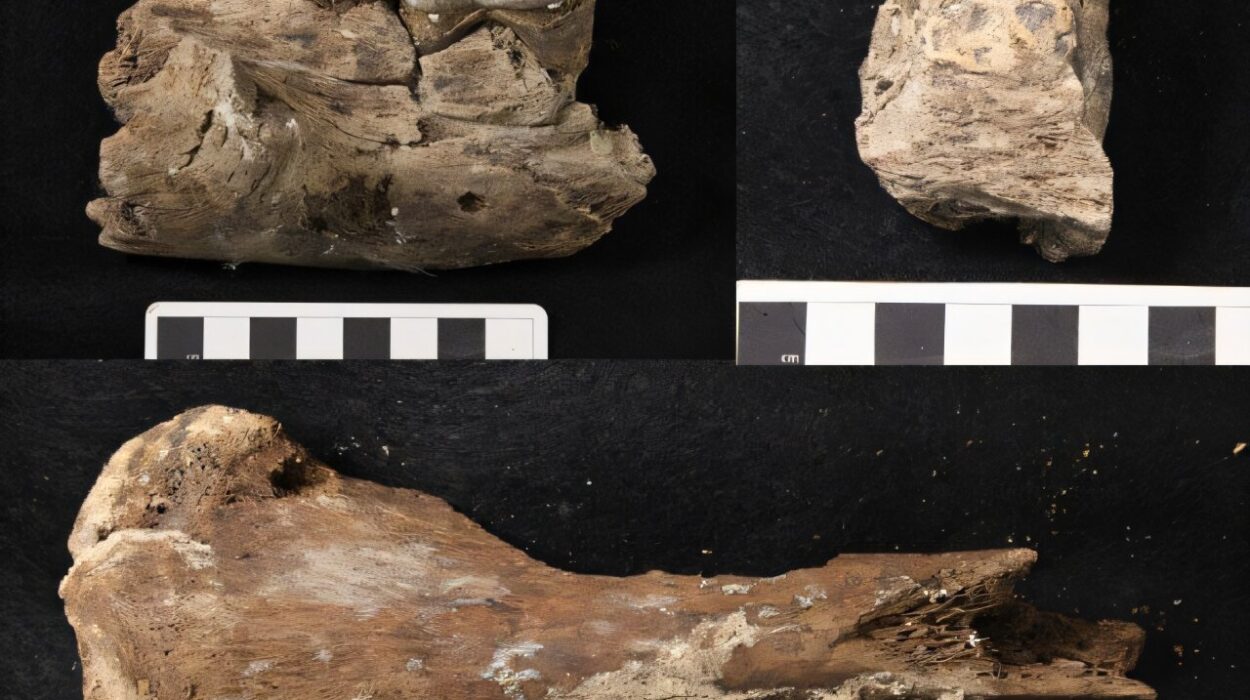Long before the Earth bloomed with forests, oceans teemed with fish, or birds graced the sky, our planet was a brutal and barren wasteland. In its early days, over 4.5 billion years ago, Earth was a swirling inferno—wracked by meteor bombardments, volcanism, and toxic gases. The oceans were acidic, the sky choked with carbon dioxide. Life, as we know it, would have seemed impossible.
And yet, against all odds, life emerged.
Around 3.8 to 4.0 billion years ago, the first signs of life began to appear. Scientists believe that simple organic molecules—perhaps formed in the primordial soup or delivered via comets—combined under the right conditions to create self-replicating molecules. One of the central players in this origin story is RNA, a molecule capable of storing information and catalyzing chemical reactions. Life, in its simplest form, was born from the dance of chemistry and energy.
These earliest life forms were likely prokaryotic cells—simple, single-celled organisms without a nucleus. For billions of years, bacteria and archaea ruled the Earth in solitude, multiplying across oceans, volcanic vents, and even deep beneath the crust. These microbial pioneers were the architects of every biological advancement that followed.
Photosynthesis and the Great Oxygenation Catastrophe
One of the most pivotal milestones in the evolution of life was the invention of photosynthesis. Around 2.5 billion years ago, a group of bacteria known as cyanobacteria discovered a new way to harvest energy—from sunlight. Using sunlight and carbon dioxide, they began producing oxygen as a byproduct.
At first, this oxygen was absorbed by iron in the oceans, creating massive deposits of rusted minerals that we still mine today. But eventually, the oxygen began to accumulate in the atmosphere, leading to what scientists call the Great Oxygenation Event (GOE).
To us, oxygen is life. But to the anaerobic organisms of ancient Earth, it was poison.
Many species perished in this catastrophic shift, while others evolved new ways to cope. It was a mass extinction—and a massive opportunity. The oxygen-rich atmosphere enabled the evolution of complex, energy-intensive life forms. This event laid the foundation for the rise of eukaryotic cells—organisms with nuclei and organelles.
Eukaryotes and the Power of Partnership
The appearance of eukaryotic cells around 2 billion years ago marked a profound leap in biological complexity. Unlike prokaryotes, eukaryotes had internal compartments, including the all-important nucleus that houses DNA.
But how did these complex cells come to be?
One widely accepted theory is endosymbiosis—a bold hypothesis that some eukaryotic organelles were once free-living bacteria. Mitochondria, for instance—the energy powerhouses of our cells—bear striking similarities to ancient aerobic bacteria. They even have their own DNA.
At some point in evolutionary history, an ancestral host cell engulfed a smaller bacterium but, instead of digesting it, formed a mutualistic partnership. The engulfed bacterium provided energy, and in return, the host offered protection. Over time, they became inseparable—co-evolving into a new kind of organism.
This cellular alliance opened the door to multicellular life.
The Leap to Multicellularity
Multicellular organisms—creatures composed of many specialized cells—didn’t appear overnight. They emerged slowly, gradually, through the aggregation and cooperation of once-independent cells. This transition was one of the most momentous in life’s history.
Why did it happen? One theory suggests that as predators evolved, it became advantageous for single-celled organisms to band together for defense. Over time, some of these cellular coalitions developed division of labor. Some cells specialized in movement, others in reproduction, others in nutrient processing. Natural selection began to favor organisms that could manage complex internal cooperation.
By around 600 million years ago, multicellular life was beginning to diversify. These early creatures lived in the oceans, forming the basis for the stunning explosion of biodiversity that was just over the horizon.
The Cambrian Explosion: Nature’s Grand Debut
Roughly 541 million years ago, life experienced a creative surge unlike anything before or since. Known as the Cambrian Explosion, this relatively short geological period saw the appearance of almost every major animal phylum we know today.
Suddenly, the seas swelled with creatures boasting eyes, limbs, shells, teeth, and nervous systems. From flatworms and mollusks to trilobites and the ancestors of vertebrates, the biological world exploded with variety.
Why did this happen?
There’s no single answer. It may have been triggered by a combination of factors: rising oxygen levels, changing ocean chemistry, the evolution of predation, and the genetic toolkit known as Hox genes, which allowed for the development of complex body plans.
Whatever the cause, evolution accelerated, and ecosystems became dramatically more complex. Life had learned not only to survive but to compete, hunt, escape, and innovate.
Life Conquers Land
For hundreds of millions of years, life remained largely aquatic. But eventually, the pull of new environments lured organisms to the land.
Around 500 million years ago, plants made the first tentative steps onto dry ground. Early land plants were small and moss-like, lacking roots or vascular systems. But they transformed the planet. By fixing carbon dioxide and producing oxygen, they altered the atmosphere and created soil, paving the way for other life forms.
Soon after, arthropods—the ancestors of insects and spiders—followed. Fossils show millipede-like creatures crawling across primitive forests.
But it was the rise of vertebrates that would truly change the terrestrial world. Amphibians, evolving from lobe-finned fish, emerged around 370 million years ago. Their lungs and limbs allowed them to venture onto land, though they remained tied to water for reproduction.
The stage was set for one of the most dramatic chapters in evolutionary history.
The Age of Dinosaurs—and Their Feathered Legacy
As life continued to evolve and diversify, it was rocked repeatedly by cataclysm. Five major mass extinctions punctuate the history of life, wiping out entire lineages and reshaping ecosystems.
One of the most famous extinction events occurred at the end of the Permian Period, around 252 million years ago. Known as “The Great Dying,” it wiped out over 90% of marine species and 70% of terrestrial species. Volcanic activity, climate change, and ocean acidification are suspected culprits.
But from the ashes of extinction, new forms arose. The Mesozoic Era—the age of dinosaurs—was born.
For 180 million years, dinosaurs ruled the Earth. They ranged from towering predators like Tyrannosaurus rex to gentle giants like Brachiosaurus. They evolved into thousands of forms, occupying every ecological niche. Meanwhile, small mammals and early birds quietly evolved in their shadows.
Then, 66 million years ago, a catastrophic asteroid impact near present-day Mexico triggered the Cretaceous-Paleogene (K–Pg) extinction. Dust and debris blocked sunlight. Plants died. Food chains collapsed.
The dinosaurs—save for one lineage—were wiped out.
That surviving lineage? Birds.
Modern birds are the feathered descendants of theropod dinosaurs. They carry within them the legacy of the Mesozoic giants, transformed by millions of years of evolution.
The Mammalian Ascent
With the dinosaurs gone, mammals emerged from the underbrush to fill the vacant ecological roles. They had already been around for over 150 million years, but the post-dinosaur world offered a fresh canvas.
Over the next 60 million years, mammals diversified spectacularly. Some took to the seas, becoming whales and dolphins. Others took to the skies—bats. Some grazed grasslands, others hunted forests. Rodents, primates, carnivores, ungulates—all branched from common ancestors.
The rise of flowering plants (angiosperms) also transformed ecosystems. These plants co-evolved with insects, especially bees, to enable efficient pollination. This drove diversity on both sides of the relationship—an evolutionary tango that shaped the modern world.
And amid the lush forests of Africa, something remarkable began to stir: the evolution of creatures who would one day look back on the tree of life and wonder where they came from.
The Dawn of Humanity
The human story is part of the larger tale of primates—a group that includes monkeys, apes, and us. Our closest living relatives are the chimpanzees and bonobos, with whom we share over 98% of our DNA.
Around 6 to 7 million years ago, in the woodlands and savannahs of Africa, the first hominins—our direct ancestors—began to diverge from the lineage leading to chimps. They walked upright, freed their hands, and developed new ways of interacting with the environment.
Species like Australopithecus afarensis (famous for the fossil “Lucy”) walked the Earth over 3 million years ago. They had small brains but humanlike bipedalism. Over time, the hominin brain grew, driven by complex social behavior, tool use, and environmental challenges.
By 2 million years ago, the genus Homo had appeared. Homo habilis, “the handy man,” used stone tools. Later, Homo erectus spread out of Africa into Asia and Europe, building fires, crafting shelters, and possibly using language.
Then, around 300,000 years ago, Homo sapiens emerged.
We were not alone. The world hosted other intelligent hominins—Neanderthals, Denisovans, Homo floresiensis—but only Homo sapiens survived. Why? The answer may lie in our ability to cooperate in large groups, to create symbols, to share stories, to imagine the future.
Evolution in Real Time
Though we tend to view evolution as a process locked in deep time, it’s still happening all around us.
Bacteria evolve antibiotic resistance in hospitals. Viruses mutate into new variants. Insects adapt to pesticides. Fish populations shrink in size due to overfishing. Climate change is reshaping the evolutionary pressures on countless species.
Even humans are evolving. Genetic adaptations—like lactose tolerance or resistance to certain diseases—continue to arise. As we intermix globally, genes flow between populations. Technology, culture, and medicine now shape our evolution in novel ways.
We may be changing not just biologically, but technologically. With CRISPR and genetic engineering, we now wield the power to direct evolution—something no species before us could do. Whether we use it wisely is another question entirely.
Conclusion: The Journey That Never Ends
The evolution of species is not a ladder but a vast, branching tree—one with roots deep in ancient seas and branches reaching toward every corner of the Earth.
From microbes to mammals, from dinosaurs to dolphins, from cyanobacteria to chimpanzees, the story of evolution is the story of life adapting, surviving, and transforming in response to a changing world.
And it’s not over.
Evolution doesn’t end with us. It continues in the bacteria in your gut, in the birds outside your window, in the melting Arctic and the growing cities. We are not the end of the journey, but part of the unfolding narrative.
To understand evolution is not only to trace the path of species—it is to see ourselves in the mirror of deep time and recognize our kinship with all life. We are, as Carl Sagan once said, “a way for the cosmos to know itself.”
Life is not a fixed state. It is a process, an adventure, a revolution that never sleeps.
And we are living in the middle of it.
